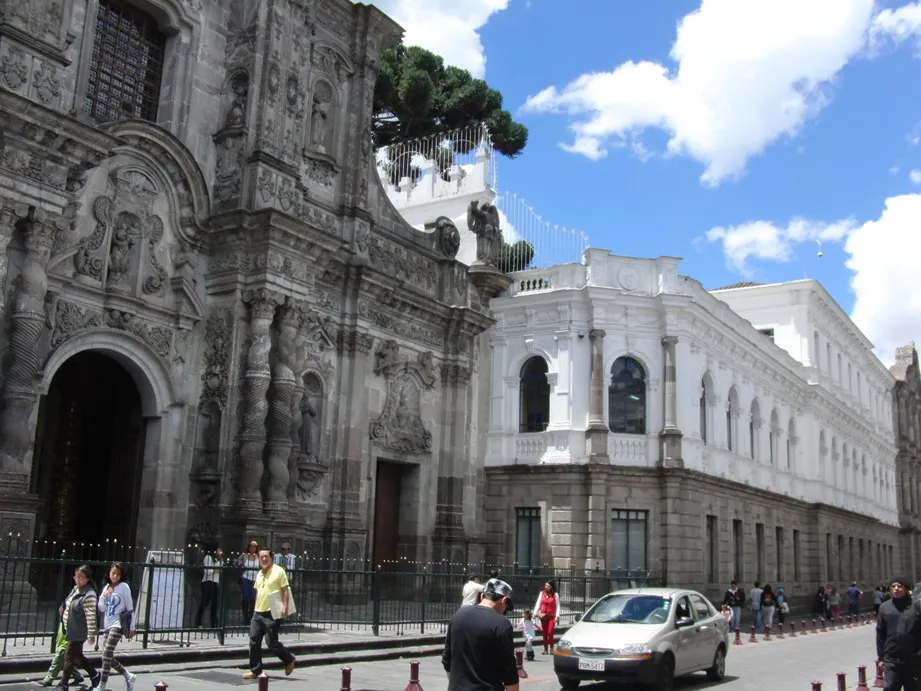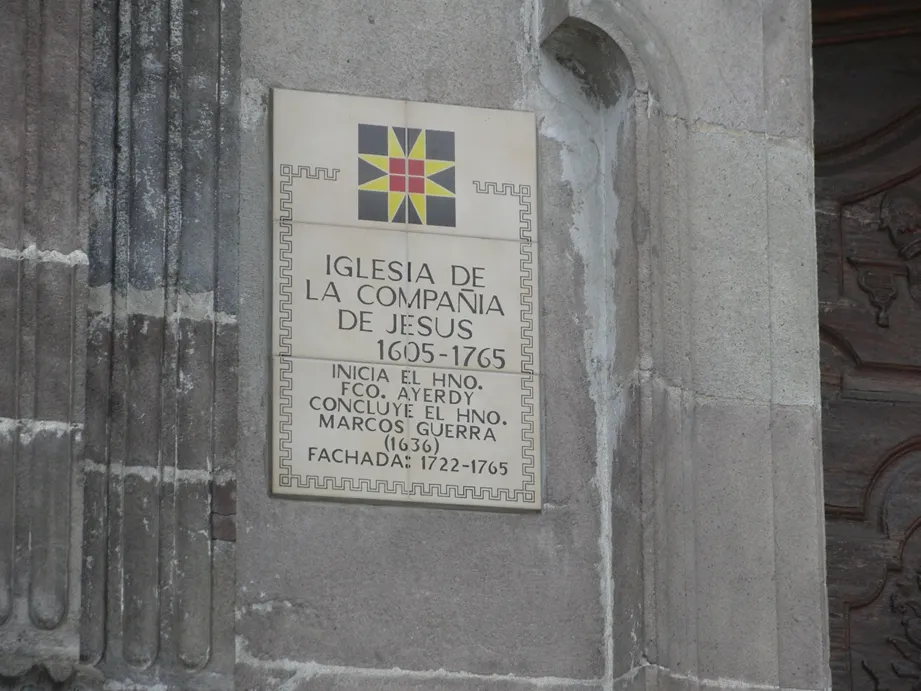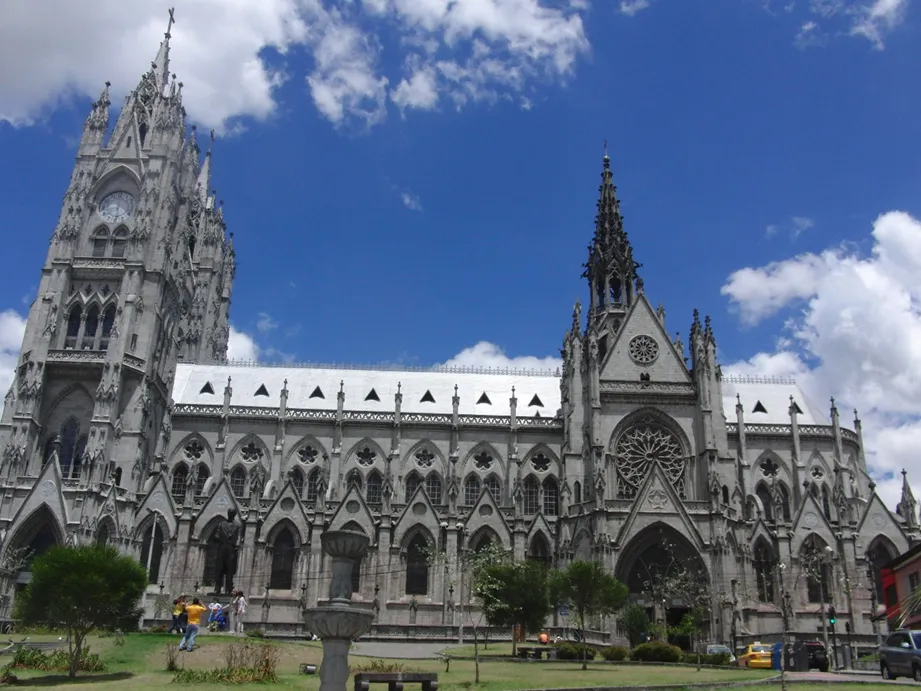
Dear readers of the communities that make up HIVE, it is a pleasure for me to present this post with photos taken by my sister-in-law Violeta on her pilgrimage through the city of Quito, before the pandemic. Within the patrimonial Historic Center of Quito there are two temples that I want to highlight in this post. One of them is the “Basilica del Voto Nacional” and the second is the “Iglesia de la Compañía de Jesús”. I sincerely hope that you enjoy both religious places, loaded with both a European and a native Ecuadorian trajectory.
The Basilica of the National Vow, also called the Basilica of the Consecration of Jesus or Basilica of San Juan, is a religious building in neo-Gothic style, in the shape of a cross, built in the historic center of the city of Quito. Considered the largest neo-Gothic temple in America, its central nave measures 140 x 35 meters. 30 meters high, along it there are 14 bronze images representing the 11 apostles and three evangelists; on the other hand, the transept is 74 mts. high, it is considered the tallest church in Latin America since its two side towers are 115 meters high. tall each. In addition, the 24 votive chapels have a height of 15 meters each. The Church is located in the sector known as Santa Prisca, on Carchi and Venezuela streets, next to the convent of the Oblate Fathers. Its construction is inspired by the Notre Dame de Paris cathedral.
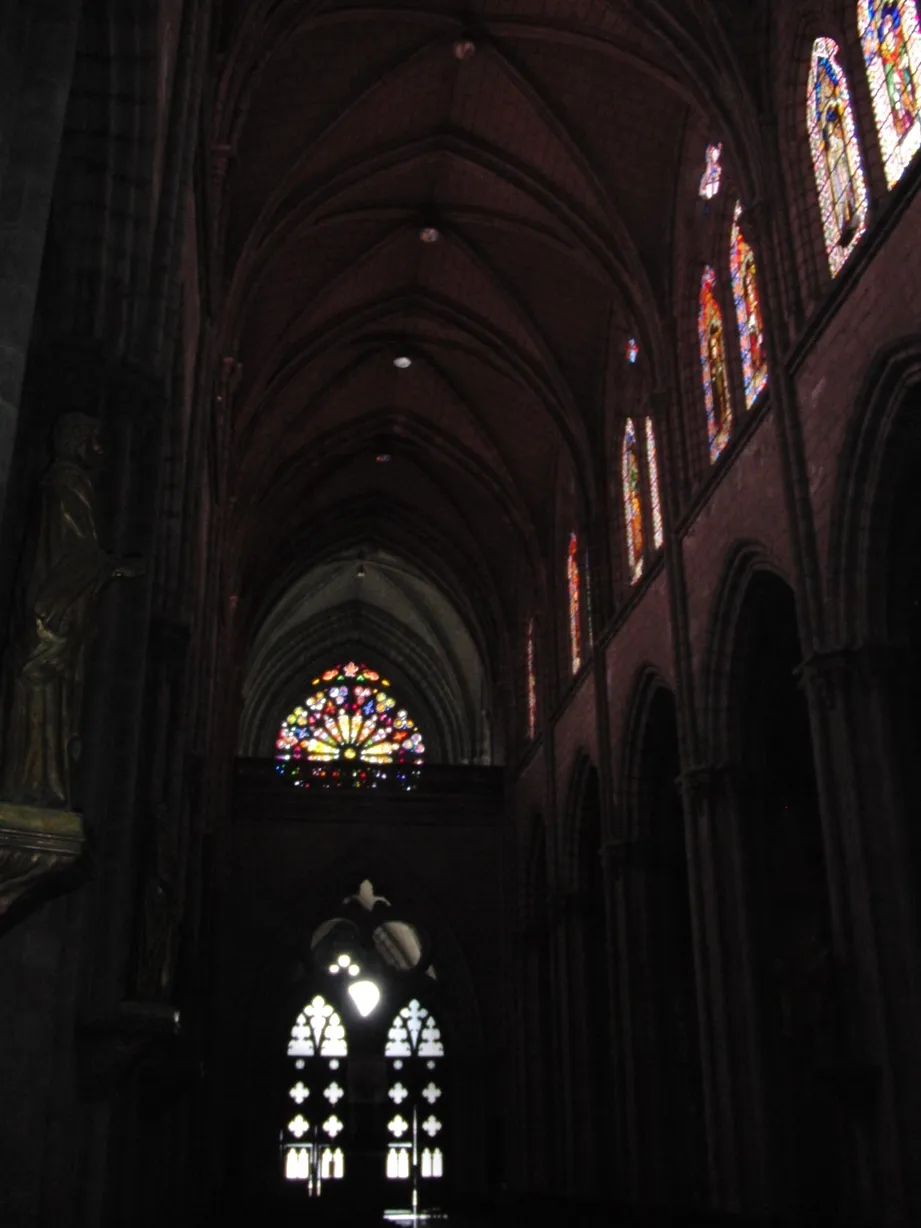
On the façade, on the upper sides of the central nave, the gargoyles are located; It should be noted that, unlike the mythological gargoyles of European churches, those of Quito represent typical animals of the Ecuadorian fauna, such as alligators, Galapagos tortoises, etc. something unprecedented in the neogothic style. Another interesting aspect, which breaks with tradition, is that the main altar is located in the transept of the structure, in the very heart of the Basilica.

The Church has, in its entirety, seven access doors, three on the façade and four on the sides. The main door is made of wood with embossed brass lining, showing scenes from the life of Jesus, the creation of man, and a scene showing the indigenous people, at the arrival of the Spanish. Most of the rest of the building's doors are made of carved wood and maintain the ogival shape typical of French Gothic. Many contain representations of the sun and other stars. In the two lateral towers of the basilica there are bronze bells of different weight between 2 and 8 quintals; Also noteworthy are the two clocks with a diameter of 4.3 meters, with three spheres in each.

Another unique feature of the church is that the niches are decorated with characters from Ecuadorian life, some 230 characters ranging from the time of the Spanish conquest, including the figure of the warrior Atahualpa, a symbol of the race that inhabited the region, to our days. Inside the church, it is possible to appreciate the stained-glass windows, also with images of the Ecuadorian endemic flora. In the basement of the church, a public crypt with its respective chapel and a pantheon were built to place the remains of some high-ranking personalities.
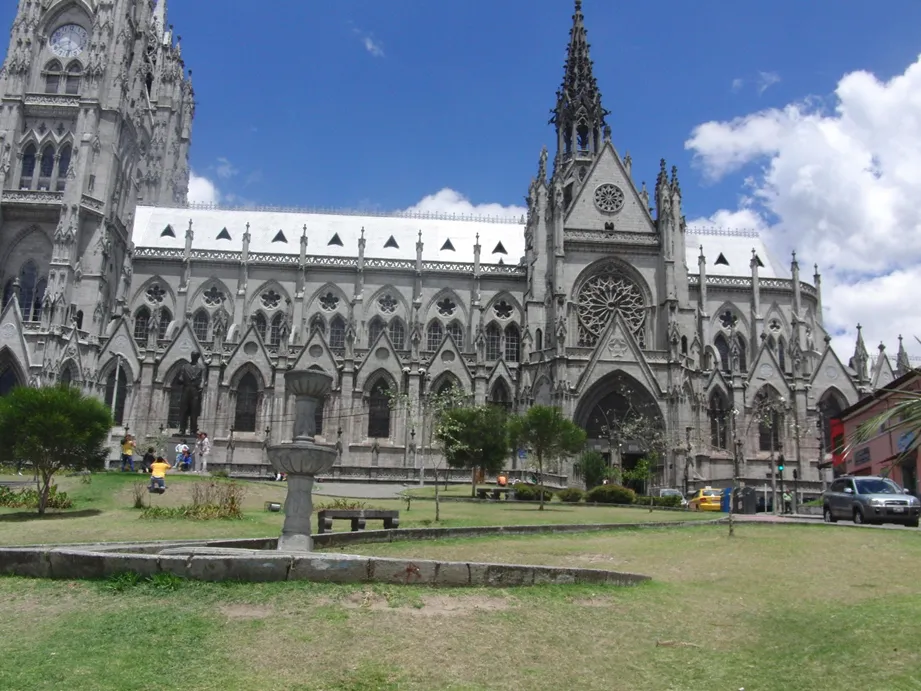
It is necessary to point out that the church has not been completed in its entirety; It is so much time consumed for its construction that it is popularly said, I don't know if sarcastically, that when the basilica is finished, then the world will end, although another version, less eschatological, only indicates the disappearance of Ecuador as a free state and sovereign.
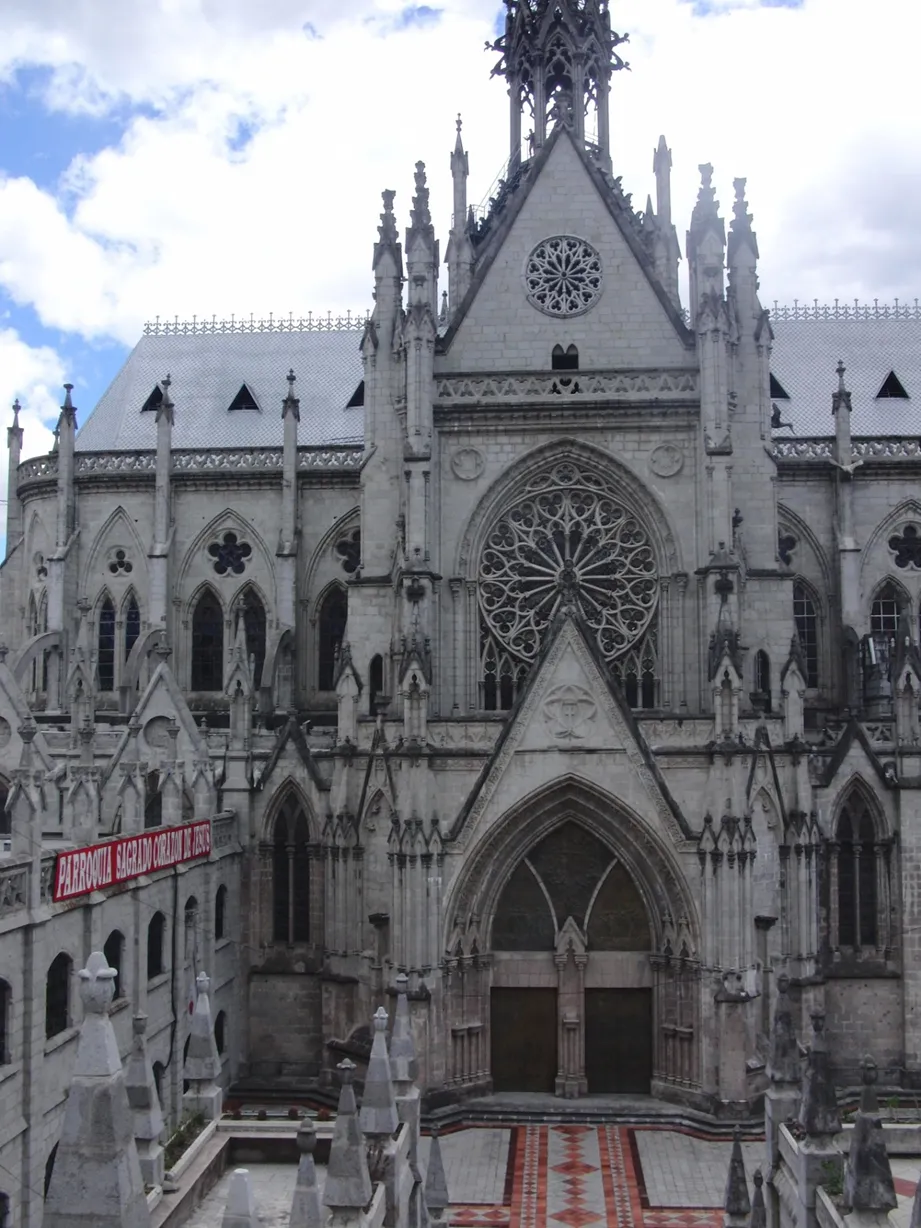
References:
*https://www.ecured.cu/Bas%C3%ADlica_del_Voto_Nacional
*https://www.ecured.cu/Iglesia_de_la_Compa%C3%B1%C3%Ada
*https://www.goraymi.com/es-ec/pichincha/quito/iglesias-templos/iglesia-compania-jesus-ad7370f7b
*https://www.goraymi.com/es-ec/pichincha/quito/iglesias-templos/basilica-voto-nacional-a5c895302
 The two side towers with their respective clocks (Las dos torres laterales con sus respectivos relojes)
The two side towers with their respective clocks (Las dos torres laterales con sus respectivos relojes)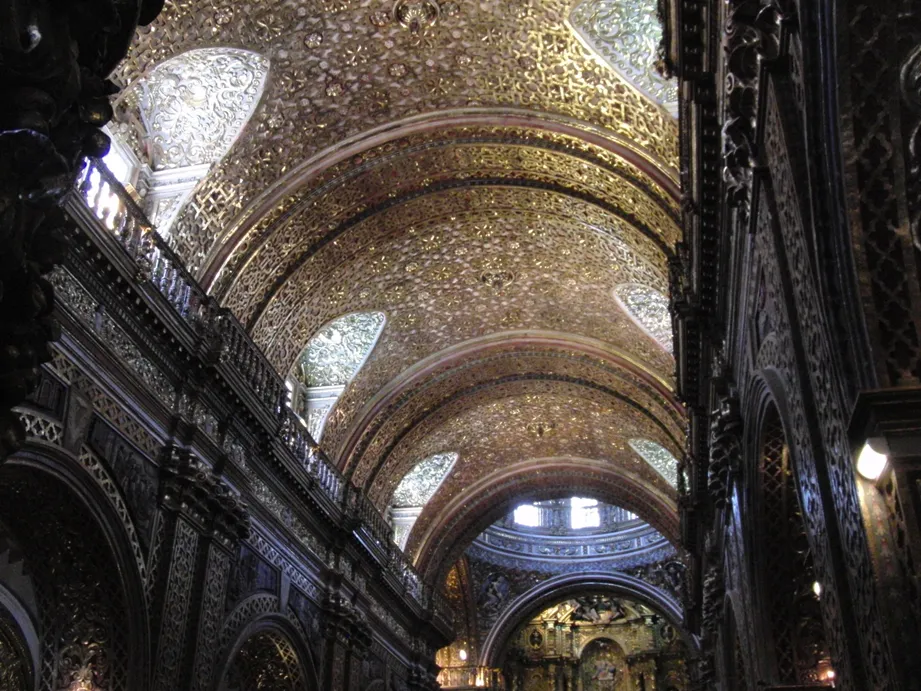
Regarding the Iglesia de la “Compañía”, as it is popularly known, located on the corner formed by García Moreno and Sucre streets, in the Historic Center of the city of Quito, it is one of the Latin American churches whose interior is almost everything covered in gold (walls, ceilings, columns, chapels, etc.), It is the masterpiece of Latin American baroque, its construction began in 1605 and it took 160 years to complete, which is why some other styles were mixed, such as the Renaissance, Mudejar, Neoclassical or Churrigeresque (a baroque style typical of a Catalan family with the surname Churrigera). A peculiar characteristic of the church is its baroque figures of flowers, fruits, garlands, carved in cedar wood, with 23-carat gold leaf. Its façade is a work of art made of volcanic stone.
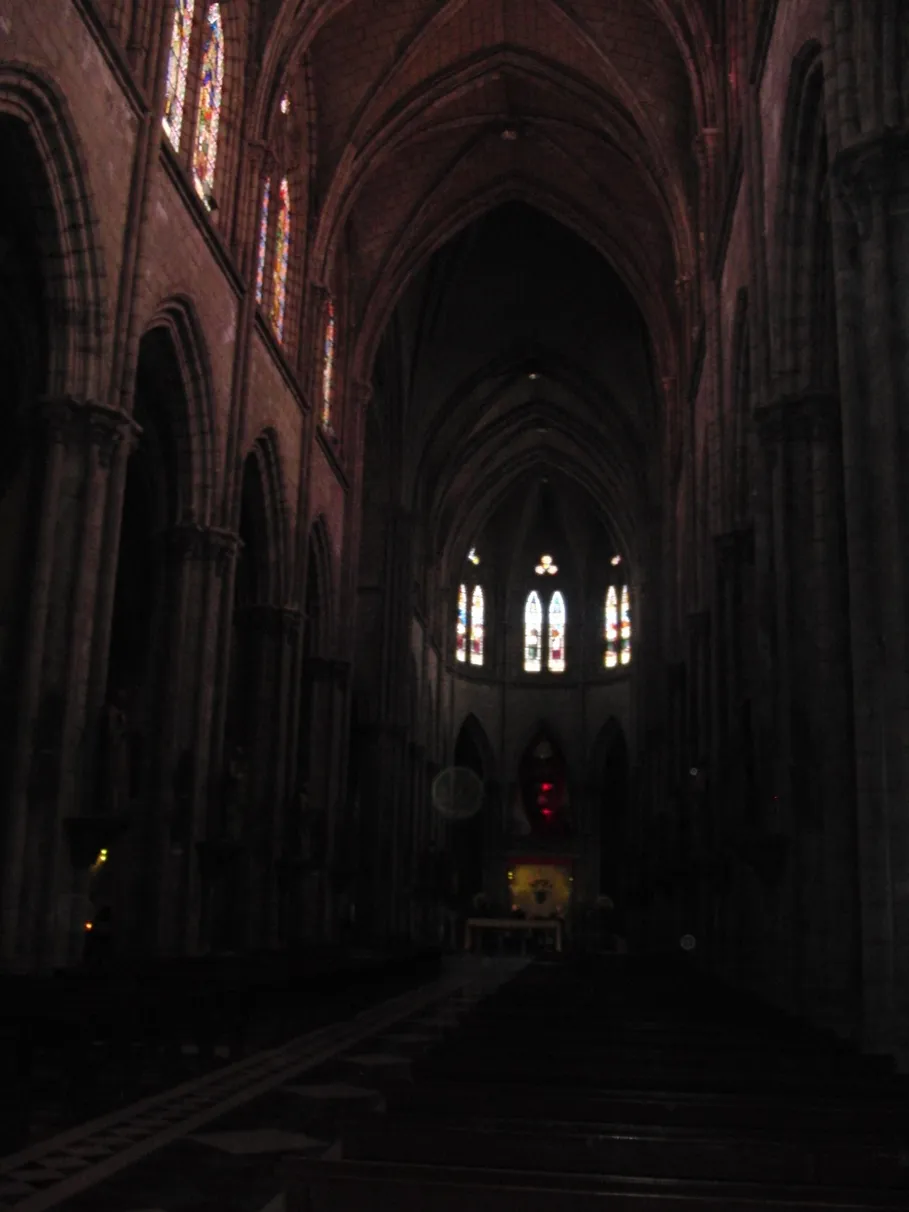
It is stated that the plans were received by an Italian priest, who together with the Basque architect Martín de Azpitarte began the building of the work, in its long years of construction other Jesuits collaborated with the raising of it, for example, the building of the stone portico volcanic gray rock was made by Father Leonardo Deubler in 1722, although it was completed in 1765, when its creator was no longer there.
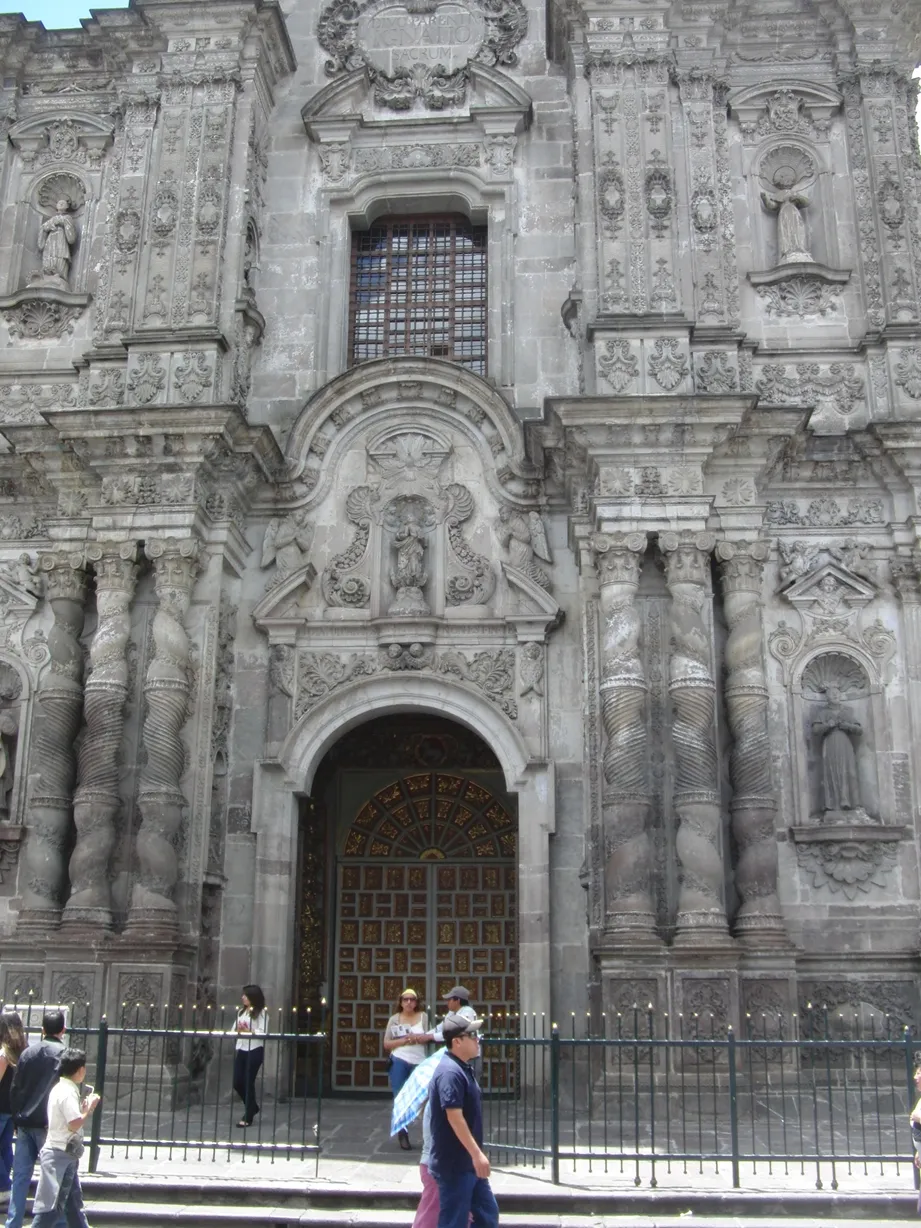
The church has a central vault, completely covered with gold leaf with fine sheets of 23 carats, 26 meters high. It has been calculated that inside the church there is at least a ton of gold in all its inlays, the precious metal was obtained by the Jesuits thanks to donations from indigenous families. The symmetrical shape of the church is that of a Latin cross, with a transept, made up of three naves; the main altarpiece is the work of the famous Quito artist Bernardo de Legarda. The contribution of the indigenous and mestizo artists of Quito imprinted their personal stamp on the representations of native flora and symbols of the ancestral peoples. The main altarpiece, gilded by Bernardo de Legarda, contains the sculptures of the four religious communities that evangelized Quito.
Estimados amigos lectores de las comunidades que conforma HIVE, es placentero para mí presentarles este post con fotos tomadas por mi cuñada Violeta Vidal en su recorrido por la ciudad de Quito, antes de la pandemia. Dentro del patrimonial Centro Histórico de Quito se encuentran dos templos que quiero destacar en este post. Uno de ellos es la Basílica del Voto Nacional y el segundo es la Iglesia de la Compañía de Jesús. Espero sinceramente que disfruten de ambos lugares religiosos, cargados de una trayectoria tanto europea como nativa del Ecuador.

La Basílica del Voto Nacional, también llamada de la Consagración de Jesús o Basílica de San Juan, es un edificio religioso de estilo neogótico, en forma de cruz,construido en el centro histórico de la ciudad de Quito. Considerado el templo neogótico más grande de América, su nave Central mide 140 x 35 mts. con 30 metros de altura, a lo largo de ésta se encuentran 14 imágenes de bronce que representan a los 11 apóstoles y a tres evangelistas; por otra parte, el crucero tiene 74 mts. de alto, se la considera la iglesia más alta de Hispanoamérica ya que sus dos torres laterales tienen 115 mts. de altura cada una. Además, las 24 capillas votivas tienen una altura de 15 metros cada una. La Iglesia se ubica en el sector conocido como Santa Prisca, en las calles Carchi y Venezuela, junto al convento de los padres Oblatos. Su construcción está inspirada en la catedral de Notre Dame de París.
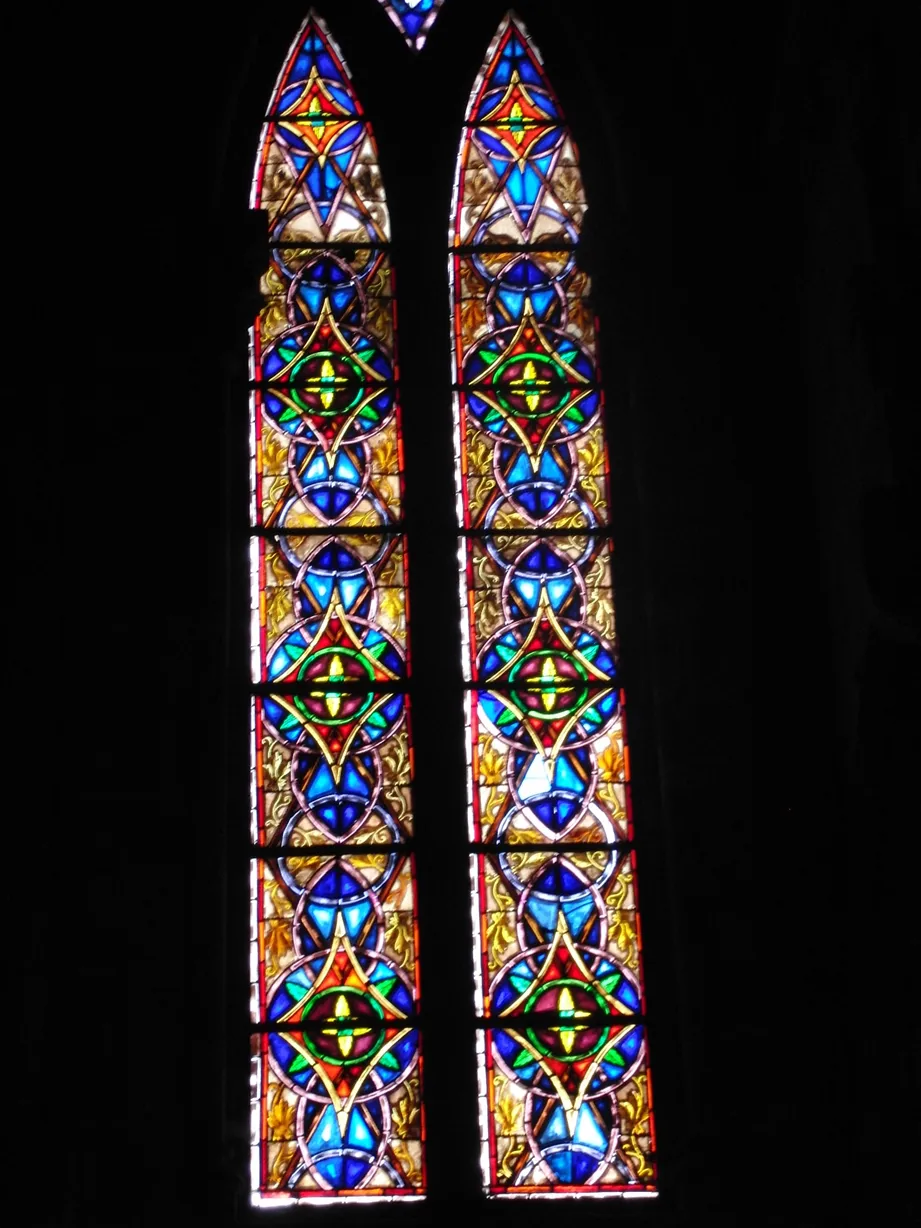
En la fachada, en los laterales superiores de la nave central, se encuentran ubicadas las gárgolas; es de hacer notar, que, a diferencia de las gárgolas mitológicas de las iglesias europeas, las de Quito representan animales típicos de la fauna ecuatoriana, tales como caimanes, tortugas de los Galápagos, etc. algo inédito en el estilo neogótico. Otro aspecto interesante, que rompe con la tradición, es que el altar mayor se encuentra ubicado en el crucero de la estructura, en el corazón mismo de la Basílica.
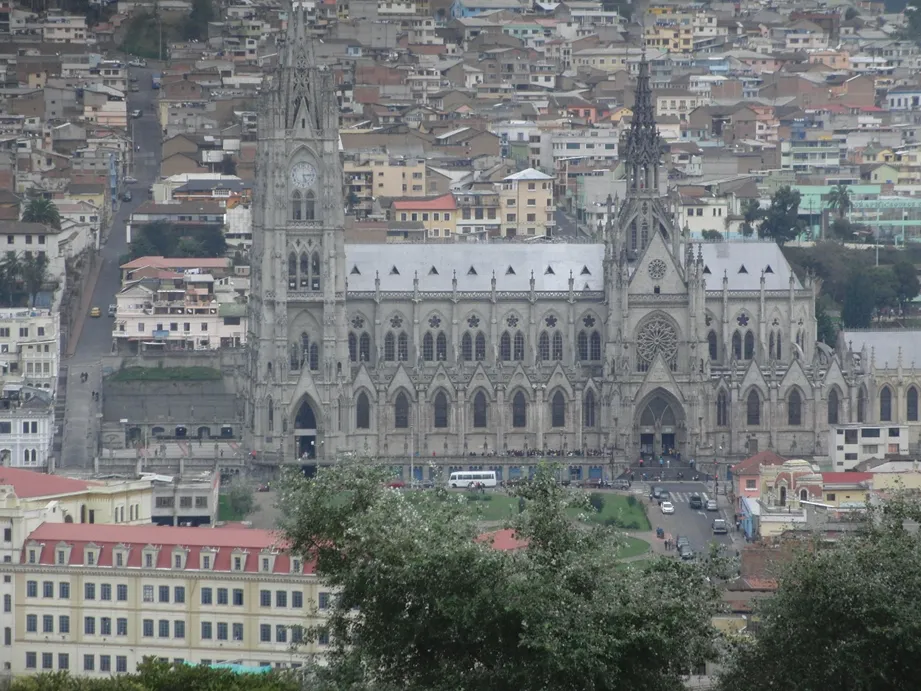
La Iglesia tiene, en su totalidad, siete puertas de acceso, tres en la fachada y cuatro laterales. La puerta principal es de madera con forro de latón repujado, que muestran escenas de la vida de Jesús, la creación del hombre y una escena que muestra al pueblo indígena, a la llegada de los españoles. La mayoría del resto de puertas del edificio son de madera tallada y mantienen la forma ojival típica del gótico francés. Muchas contienen representaciones del sol y otros astros. En las dos torres laterales de la basílica se encuentran campanas de bronce de diverso peso entre 2 y 8 quintales; también son notable los dos relojes de un diámetro de 4,3 mts, con tres esferas en cada uno.

Otra característica única de la iglesia es que los nichos están decorados con personajes de la vida ecuatoriana, unos 230 personajes que van desde la época de la conquista española, incluida la figura del guerrero Atahualpa, símbolo de la raza que poblaba la región, hasta nuestros días. Dentro de la iglesia es posible apreciar los vitrales, también con imágenes de la flora endémica ecuatoriana. En los sótanos de la iglesia se construyeron una cripta pública con su respectiva capilla y un panteón para colocar los restos de algunos altos personajes.
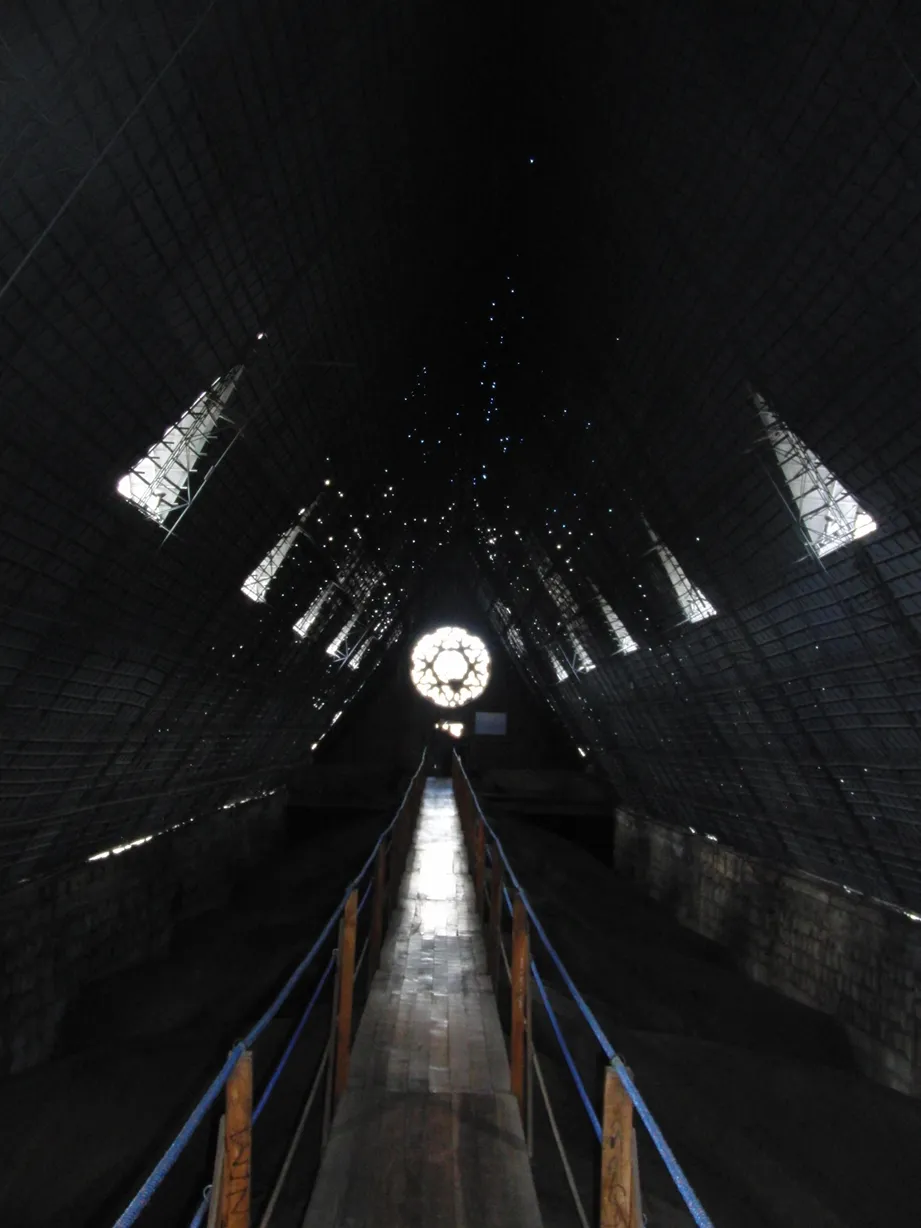
Es necesario señalar que la iglesia no ha sido terminada en su totalidad; es tanto el tiempo consumido para su construcción que se dice popularmente, no sé si sarcásticamente, que cuando se termine de construir la basílica, entonces, se acaba el mundo, aunque otra versión, menos escatológica, solo indica la desaparición del Ecuador como estado libre y soberano.
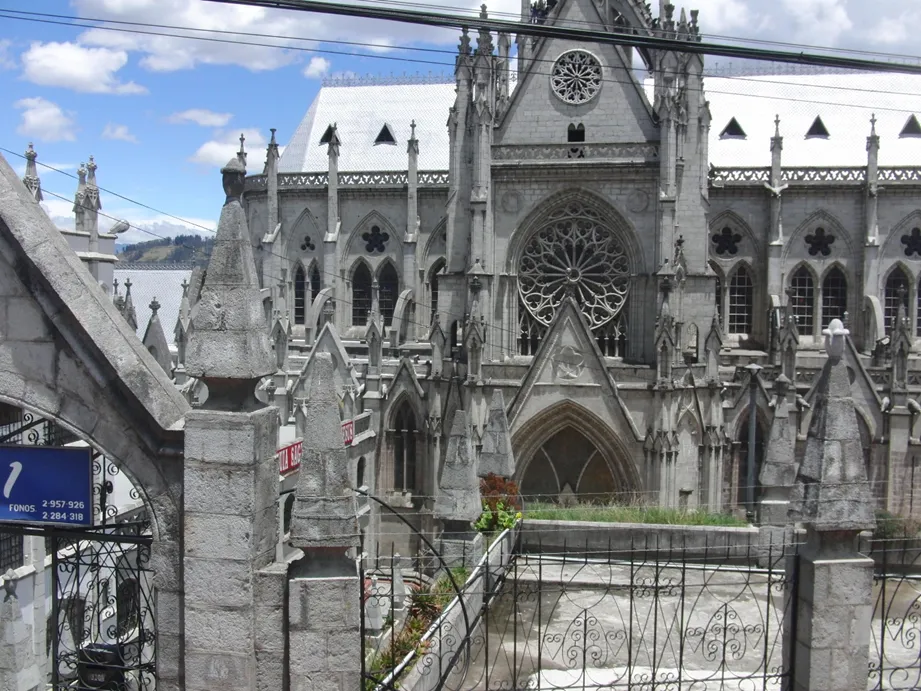
References:
*https://www.ecured.cu/Bas%C3%ADlica_del_Voto_Nacional
*https://www.ecured.cu/Iglesia_de_la_Compa%C3%B1%C3%Ada
*https://www.goraymi.com/es-ec/pichincha/quito/iglesias-templos/iglesia-compania-jesus-ad7370f7b
*https://www.goraymi.com/es-ec/pichincha/quito/iglesias-templos/basilica-voto-nacional-a5c895302


En lo que respecta a la Iglesia de la Compañía, como popularmente se la conoce, ubicada en la esquina formada por las calles García Moreno y Sucre, en el Centro Histórico de la ciudad de Quito, es una de las iglesias latinoamericanas cuyo interior está casi todo recubierto de oro (paredes , techos, columnas, capillas, etc.) es la obra cumbre del barroco latinoamericano, su construcción se inició en 1605 y se necesitaron 160 años para su culminación, razón por la cual se mezclaron algunos otros estilos como el renacentista, mudéjar, neoclásico o churrigeresco (un estilo barroco típico de una familia catalana de apellido Churrigera). Una característica peculiar de la iglesia son sus figuras barrocas de flores, frutos, guirnaldas, talladas en madera de cedro, con pan de oro de 23 quilates. Su fachada es una obra de arte hecha en piedra volcánica.
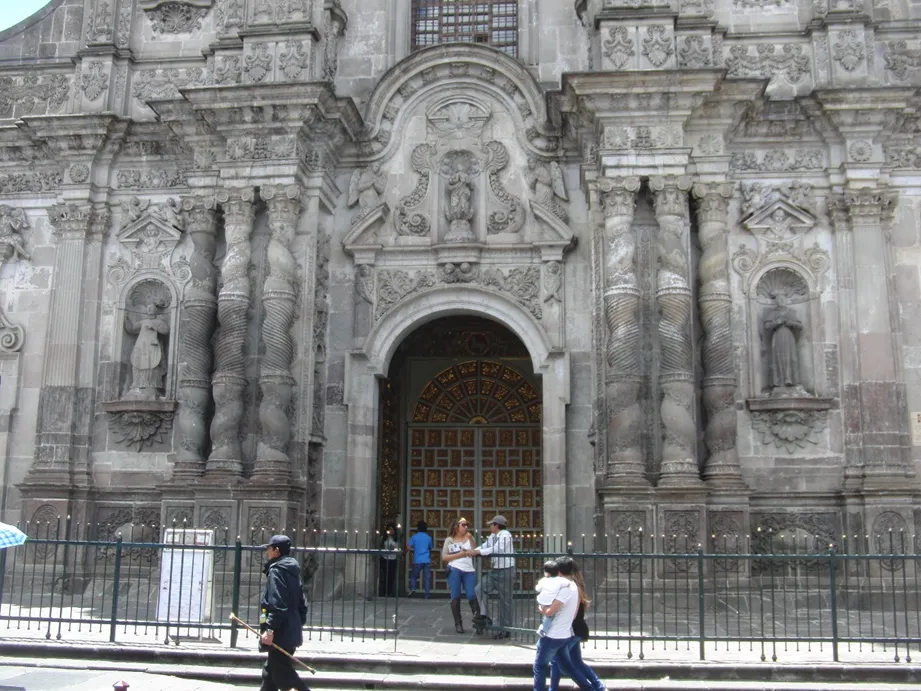
Se afirma que los planos fueron recibidos por un sacerdote italiano, quien junto con el arquitecto vasco Martín de Azpitarte iniciaron la edificación de la obra, en sus largos años de construcción colaboraron con el levantamiento de la misma otros jesuitas, por ejemplo, la edificación del pórtico de piedra volcánica de roca gris fue realizado por el padre Leonardo Deubler en 1722, aunque fue terminado en 1765, cuando ya no estaba su autor.
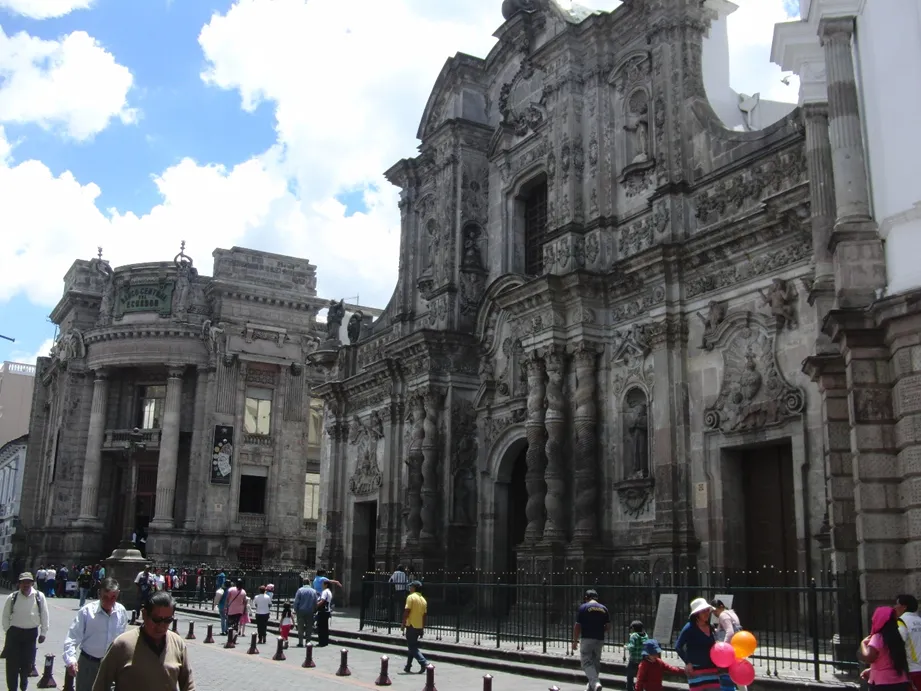
La iglesia posee una bóveda central, totalmente recubierta de pan de oro con finas láminas de 23 quilates, de 26 metros de alto. Se ha calculado que dentro de la iglesia hay al menos una tonelada de oro en todas sus incrustaciones, el precioso metal lo consiguieron los jesuitas gracias a donaciones de familias indígenas. La forma simétrica de la iglesia es la de una cruz latina, con un crucero, compuesta por tres naves; el retablo Mayor es obra del famoso artista quiteño Bernardo de Legarda. La contribución de los artistas indígenas y mestizos de Quito le imprimieron su sello personal en las representaciones de flora nativa y símbolos de los pueblos ancestrales. El retablo mayor, dorado por Bernardo de Legarda, contiene las esculturas de las cuatro comunidades religiosas que evangelizaron a Quito.
